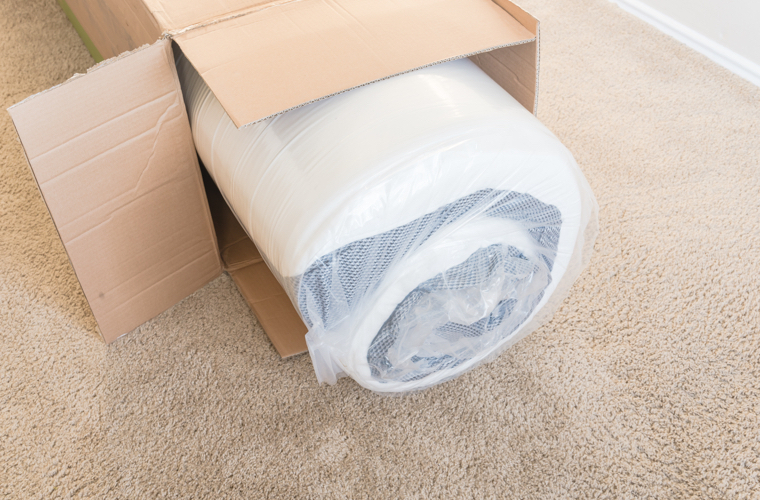Guide To Mattress Coils: Coil Count, Types And Gauge

Coils are an essential part of a mattress. Most buyers know that they affect firmness, sinking into a mattress, its durability, motion transfer, and plenty of other important characteristics. Sleep experts note that people often ask questions like "What is a good coil count for a Queen mattress?", “Should I choose thicker coils?” or “Are pocketed coils better than connected coils?” but it is pretty hard to explain how the whole system works. There is nothing impossible, though.
In fact, there are 3 most important criteria to consider: mattress coil count, type of coil, and coil gauge. Let’s take a look at each of them in more detail.
Mattress coil counts — Are there any gold standards?

So, how many coils should a good mattress have? It is a complex question. First, let’s take a look at the mattress coil count chart.
| # | Minimum coil count |
|---|---|
| Full | 300 |
| Queen | 375 |
| King | 450 |
Generally speaking, it illustrates the main rules about the number of coils in mattresses of different sizes. The figures you can see are the minimum limits and therefore, if a Full-size mattress has fewer than 300 coils, you should not buy it. The same works for a Queen mattress with <375 coils and a King mattress with <450 coils inside it.
There are no strict gold standards, but there is a kind of a universal rule — an ordinary mattress is supposed to have 250-1000 coils inside. The only exception is smaller beds, in particular, cribs with only 100-150 coils.
Here are other important facts about the coil count to consider.
- The number of springs is not the most important thing. More coils can fail to provide a better level of support. Fewer coils, in turn, can be very supportive due to their higher gauge or other specialties and techniques.
- In fact, mattress coil density or coil count are not so important as the mattress coil types. You can find more detailed info about them below.
- Working turns of coils is another significant aspect. The more tightly it is wound, the softer it is and the longer a mattress lasts.
Yes, it’s all about the coil count. Mattress is an ecosystem, and the number of coils is an integral but definitely not the most important part of it.
Mattress coil gauge
Still, the number of coils in a mattress should be considered, and gauge matters, too. Simply put, this is the thickness of the coils. A certain number (1, 2, 3… 13, 14, 15) indicates a certain level of thickness. On the US mattress market, 12-15 gauge is considered a norm.

Coil gauge chart
| Gauge No. | 12 | 13 | 14 | 15 |
|---|---|---|---|---|
| Approx. Thickness | 0.1043 | 0.0897 | 0.0747 | 0.0673 |
| Features | More durable, firmer feel | Pretty durable, pretty firm | A middle ground, considered as a perfect gauge on the market | The thinnest & the softest |
As you can see, the higher gauge, the thinner the mattress, and vice versa. 12-gauge coils are used to produce the firmer, more supportive mattresses. 15-gauge coils are used to make softer mattresses, respectively. Lower gauges also allow using fewer coils as they are more supportive, and they make a mattress more durable.
Types of coils
Today, we have a lot of different types of coils. Still, all of them can be divided into two main categories, the two camps – connected coils & pocketed coils.
The 1st camp – Connected coils

The old standby – connected coil system. As the name suggests, this is the system where all the coils are connected to each other. Mattresses with connected coils were considered the most common, popular, and frequently bought products on the market for a really long time. Moreover, such coils are inside of the vast majority of mattresses produced today.
Connected coils encompass a few subtypes, which are:
- Bonnel. The most popular and frequently used type of coils. These are hourglass steel wire coils laced by cross wire helicals. Mattresses with bonnell coils are very supportive and durable, but they also have shortcomings, in particular, pressure point discomfort and poor motion isolation.

- Offset. This is another type of hourglass coil with flattened top and bottom surfaces. Mattresses with offset springs are super conforming and durable. They are not as good when it comes to motion isolation like all other connected coils, though.

- Continuous. The system in which all coils are formed from a single super long wire. They are usually much cheaper than mattresses with other coil systems.

The 2nd camp – Pocketed coils

Pocketed (wrapped or Marshall) coil. These are spins pocketed inside the little pockets of fabric. Hence, these are separate coils that are not connected. They do not create a big system.
In some cases, there are hundreds or even more than a thousand of such coils, and the best thing is if you press down, for example, on the left top corner of the mattress, the coils in this area are compressed, and springs in other areas aren’t — they are in their own pockets, so they don’t “feel” that pressure.
Pocketed Vs. Connected coils — What’s better?

So, let the battle begin.
Motion transfer
The main difference between the two main camps is obvious: a connected coil system is indeed a bad option if you are dreaming of complete motion isolation. The pocketed coil, in turn, reduces the motion transfer that you get on a mattress dramatically. Simply put, with pocketed or wrapped coils, your bed is not quite going to be as bouncy so when your partner (a child, a pet, etc.) rolls over you just will not feel it.
Conforming or not conforming?
Pocketed coils also conform closely to a sleeper’s body. This is especially important for side sleepers as well as those with curvy bodies — they are likely to enjoy sleeping on mattresses with separate springs inside more than sleeping on connected coils.
Perfect pocketed and not perfect connected coils?
Still, it doesn’t mean that pocketed springs are better in everything. Connected coils are better for heavier people because they don’t allow heavy parts of your body to sink into a mattress too deeply. This is also great for stomach sleepers — the heavier parts, in particular, your hips, will not sink into a mattress deeper than the other parts of your body. And that’s exactly what happens with pocketed coils.
What is a coil mattress or final thoughts about timeless classics
So what are the most important things about mattress coils? Let’s draw the conclusions.
- What about mattress coils comparison? How can I compare all those characteristics? Focus on type, then consider the number of springs and gauge. Type is the top priority.
- How many coils in a good mattress? There is no gold standard. Still, min coil count is 300 for a Full mattress, 375 for a Queen and 450 for a King mattress.
- Is a high coil count mattress better than any other mattress? This is not the most important characteristic to consider. Moreover, the high count does not necessarily mean a better, more supportive mattress.
If you want to choose an ideal item, make sure that a mattress has more coils than 300, 375, and 450 coils for a Full-size, Queen-size, and King-size mattress, respectively. Pay attention to coil gauge and consider the type of coil (it is even more important), and make your choice.
FAQ
What does coil count mean in mattresses?
Coil count is a number of coil springs inside an innerspring or a hybrid mattress.
How does coil count affect a mattress?
Here are a few most important things to consider: 1) coils provide more support; 2) the more coil springs, the firmer the mattress; 3) more coils does not mean a better mattress; 4) mattress with coils usually last longer.
What is the highest coil count for a mattress?
It is considered that the highest coil count for an ordinary Queen-size mattress is 1,000 coil springs. This number can reach up to 2,000 coil springs for a King mattress and bigger mattresses like Texas King, Wyoming King, and Alaskan King.
What should be the minimum coil count for a mattress?
The minimum coil count for smaller mattresses that are suitable to use by adults, in particular, Full-size mattresses, is 300 coil spins.
What is the best coil count for heavy people?
In this case, the min coil count is 600 for a Queen-size mattress.
What is a good coil count for a Queen-size mattress?
A Queen mattress must have at least 375 coils. The max count is 900 coils. 700+ coils is an average number of coil spins. This count may vary depending on the type of coils, weight of sleepers, and other factors, but buying a Queen-size mattress with fewer than 375-400 coil springs inside is a bad idea.
What is a good coil count for a Full mattress?
The minimum coil count for a Full mattress is 300 coil springs. As mentioned before, the rest depends on plenty of factors, in particular, the weight of a sleeper (or sleepers), type of coil springs, etc.
Is 768 coil count good for firmness (Queen-size mattress)?
There are a few Queen mattresses with 768 coils, and they are medium-firm (firmness 7) In general, that’s the nearly average count for a Queen-size bed.
What is a good coil count for a twin mattress?
Twin mattresses should have at least 300 coils.
What is a good coil count for a king mattress?
It should have at least 450 coils.
What is a good coil count for a crib mattress?
In this case, a good coil count is 135 to 150 coils.




